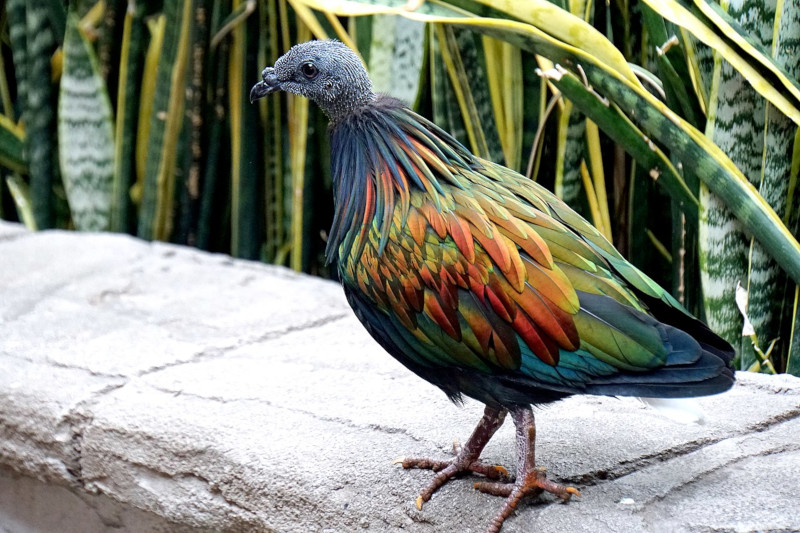
Clouded Leopard Facts
- The relatively short term of Clouded Leopard easily serves as the most often employed common name for this beautiful wild feline. Yet, the truly stunning mammal does have at least one other general title. That’s the extremely similar epithet of mainland clouded leopard.
- Inside of scientific circles, though, many individuals may know it better by yet another tag. That’s its purely technical designation. Fortunately, however, that’s a comparatively simple one for the layperson to pronounce. It holds the official moniker of Neofelis nebulosa.
- The amazing animal received its first official tag due to the concerted efforts of Edward Griffith. The highly respected British naturalist accomplished the first recognition of the creature as a separate and distinct species. He managed that scientifically noteworthy deed in 1821.
- He did not assign the creature the technical epithet it holds today, however. He originally named it Felis nebulosa. Since that time, it’s gone through several renamings, though, due to ongoing research. It finally received the one it holds presently at a much later date.
- Regrettably, the Clouded Leopard now finds itself in somewhat dire straits. It’s seen its population steadily reduced in more modern times, for a wide variety of reasons. That trend further holds true across its entire range. The IUCN thus now lists it as Vulnerable.
- The marvelous work of Nature currently faces multiple threats to its continued existence as a species. Most of these perils stem from the actions of man. Some include ongoing poaching, despite being a protected species. It also now faces the danger of climate change.
Related Articles




Clouded Leopard Physical Description
The gorgeous Clouded Leopard almost immediately captures the attention of all those who encounter it, as most wild felines do. Some, though, only do so due to their visual appeal. This mammal has more to offer, however, because it also boasts some quite respectable dimensions.
In that specific regard, though, the animal follows a pattern common to its many relatives. That’s in the fact that it displays a certain degree of the physiological characteristic of sexual dimorphism. In its specific case, this natural trait manifests itself purely in terms of overall physical size.
Slightly smaller in size, females of the species attain an average body length of approximately 27 – 37 in (68.6 – 94 cm). The tail also typically adds another 24 – 32 in (61 – 82 cm). Weights for this sex also remain less than the male. This usually ranges from roughly 22 – 30 lb (10 – 13.6 kg).
Males of this marvel, meanwhile, achieve moderately greater lengths and much more significant masses. For them a mean body length equals about 32 – 43 in (81 – 108 cm). Their tail adds an additional 29 – 36 in (74 – 91 cm). Masses for them, however, average 44 – 55 lb (20 – 25 kg).
Otherwise, both the genders of the awesome Clouded Leopard present the same outward appearance. Despite the notable length and weight differences, shoulder height for both averages 20 – 22 in (50 – 55 cm). The males thus have a significantly stockier build than the females.
The wild feline also has a distinctive pattern of coloring. The background consists of either an ocher or dark gray. Yet, muliple splotches of dark gray or black mark the coat without pattern, and of random sizes and shapes. These even appear on the face, while the ears show purely black.
- Kingdom: Animalia
- Phylum: Chordata
- Class: Mammalia
- Order: Carnivora
- Family: Felidae
- Genus: Neofelis
- Species: N. nebulosa

Clouded Leopard Distribution, Habitat, and Ecology
The breathtaking Clouded Leopard apparently evolved as native to a comparatively broad swathe of the surface of the globe. The full extent of that zone of habitation might come as a surprise to some of our readers, though. That’s because the amazing animal occupies a large portion of Asia.
Within that larger overall range, however, it doesn’t appear in every part of the continent. It mainly resides in the souteastern sections. From there, though, its natural territory also expands into China. Yet, in another direction, its range also reaches deep into the Himalayan foothills in Nepal.
Fortunately, this incredible creature has an extremely high level of flexibility regarding its choice of habitat type. It therefore appears in a wide range of local ecosystems. This flexibility extends to altitudes, since it also lives at heights ranging from near sea level to 12,200 ft (3,720 m).
In some parts of its territory, the mammal lives in regions composed of sub-tropical, semi-deciduous forests. But, in other areas it also makes its home in largely evergreen woodlands. In some regions, such as Thailand, the intrepid feline also lives in sections of dry tropical forest.
Like many of its kindred around the world, the stunning Clouded Leopard principally lives a solitary life. It’s also mainly nocturnal in nature, and even mostly arboreal in nature. The cat’s extremely reclusive, and thus rarely seen, except for being caught by the occasional camera trap video.
Being a feline, it’s also naturally entirely carnivorous in terms of diet. It’s surprisingly quite versatile, though. Somtimes it actively stalks its prey, yet at others it waits in ambush. It primarily consumes moderate-sized prey, including macaques, lorises, pangolins, and squirriels, among others.
Species Sharing Its Range



Check out our other articles on 4 Charming Christmas Season Species, Marbled Polecat, Gobi Desert, Mountain Laurel, Wolf Eel, Eastern Yellowjacket, Indian Vulture, Black Mamba









Leave a Reply